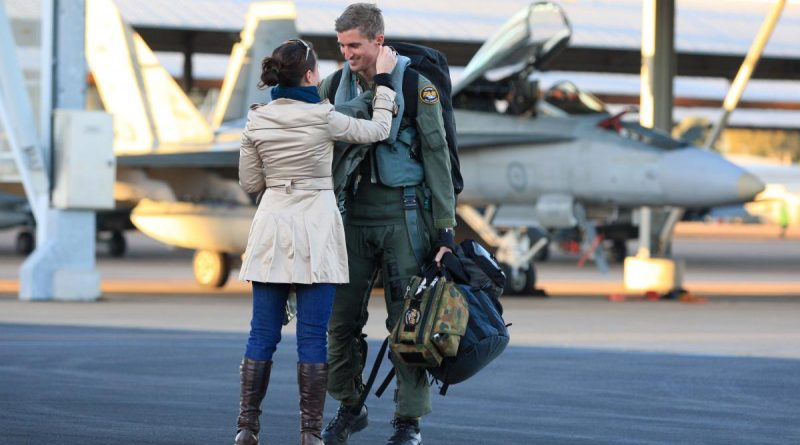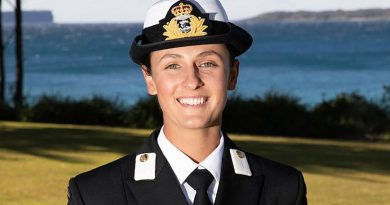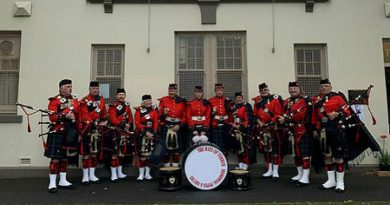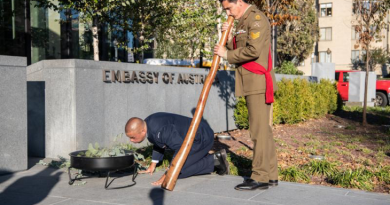Film provides glimpse of reality in cockpit of fighter jet
Share the post "Film provides glimpse of reality in cockpit of fighter jet"

The heart-pumping fast-jet manoeuvres of 1986 movie Top Gun spawned a generation of kids wanting to grow up and fly fighter jets.
FILE PHOTO: Wing Commander Martin Parker is greeted by his wife Chantelle on returning from the final mission of his fighter combat instructor course in 2011. Story by Warrant Officer Class 2 Max Bree. Photo by Leading Aircraftman Mark Friend.
Tom Cruise’s Maverick and rival pilot Iceman, played by Val Kilmer, wowed ’80s children with their fast-paced training enmity that developed into a bond in combat.
While many only dreamed of being fighter pilots, then seven-year-old Martin Parker was one of the few to grow up and actually do it.
He joined the Royal Australian Air Force in 1998 and has since flown Hornets, Eurofighter Typhoons and currently the F-35A.
He watched the movie’s long-awaited sequel, Top Gun: Maverick, with other aviators before Exercise Diamond Storm.
“After watching the first movie as a child, I wanted to be a fighter pilot for the rest of my life, and that happened again last Saturday,” Wing Commander Parker said.
Set about 30 years after the original film, the sequel has Cruise again in the lead role as Maverick, who over the years has dodged promotion to remain flying.
Kilmer returns as Iceman, now commander of the US Pacific Fleet, who reassigns Maverick as a Top Gun instructor when other superiors try to ground him.
Even with his views shaped by years of real-life experience as a fighter pilot, Wing Commander Parker said the new movie exceeded his expectations.
“The idea of getting a bunch of air warfare instructors together to solve complex, tactical problems is absolutely what we do,” he said.
“So is the idea that those solutions involve demanding mental and physical loads along with high risks for people in the cockpit.”
While Wing Commander Parker believed the movie’s overall concepts reflected reality, specifics around missions, combat sequences and threat response varied.
“The way they defended against surface-to-air missiles was partly accurate, while the way they ingress and egress a target area was an extension or exaggeration of the truth,” he said.
“Some of the dogfight scenes were accurate but an exaggeration.”
He said the most outrageous moment was when Maverick flew through the middle of a close formation at 1000mph, missing jets by a few feet.
“We don’t really do that because you’re a hair away from crashing into another aeroplane,” Wing Commander Parker said.
“During training, we don’t get as close as the movie made out in air-to-air sequences.
“They went to great lengths to capture a lot of real footage but there is a bit of CGI that shows some unreal moments.”
Wing Commander Parker loved the movie’s energy and liked how it easily demonstrated what a fast-jet pilot’s job was like.
“Our job is hard to describe, so you really need the scenes and the concepts in the movie to help people understand,” he said.
“It’s an exceptional privilege to fight in high-performance aeroplanes. The movie does a good job of giving friends and family a better taste for what it’s like.”

CAPTION: A Royal Australian Air Force F-35A Lightning ll taxis before departing RAAF Base Tindal during Exercise Diamond Storm 2022. Photo by Leading Aircraftman Samuel Miller.
Australia has its own version of the US Navy Top Gun school, known as the Air Warfare Instructor Course, of which Wing Commander Parker is a graduate.
It runs every two years, training crews in advanced tactical flying, developing them as Air Force’s foremost experts in combat training at front-line squadrons.
Wing Commander Parker said the Royal Australian Air Force’s six-month course aligned more closely with the US Air Force’s advanced training, and was longer and covers more roles than US Navy Top Gun.
Australia’s course pre-dates the American programs, having begun in 1954 following high losses of RAAF pilots in the Korean War.
“It was first known as Fighter Combat Instructor Course. There was a focus on tactical outcomes and not just training people to be a pilot,” Wing Commander Parker said.
The Air Warfare Instructor Course culminates in Exercise Diamond Storm, combining a number of aircraft and capabilities including fighters, electronic attack, surveillance and airlift.
“We need our folks to be deep specialists in their platform because air warfare is becoming more complex,” Wing Commander Parker said.
The course is often the pinnacle of a pilot’s career and recently expanded to include air and ground personnel outside of fast jets.
“The idea being complex problems require complex solutions,” Wing Commander Parker said.
“It’s often a mix of capabilities, including C-130 [Hercules] and P8 [Poseidon], that requires pilots to understand how to integrate and fight together.”
.
.

.
.
Share the post "Film provides glimpse of reality in cockpit of fighter jet"





